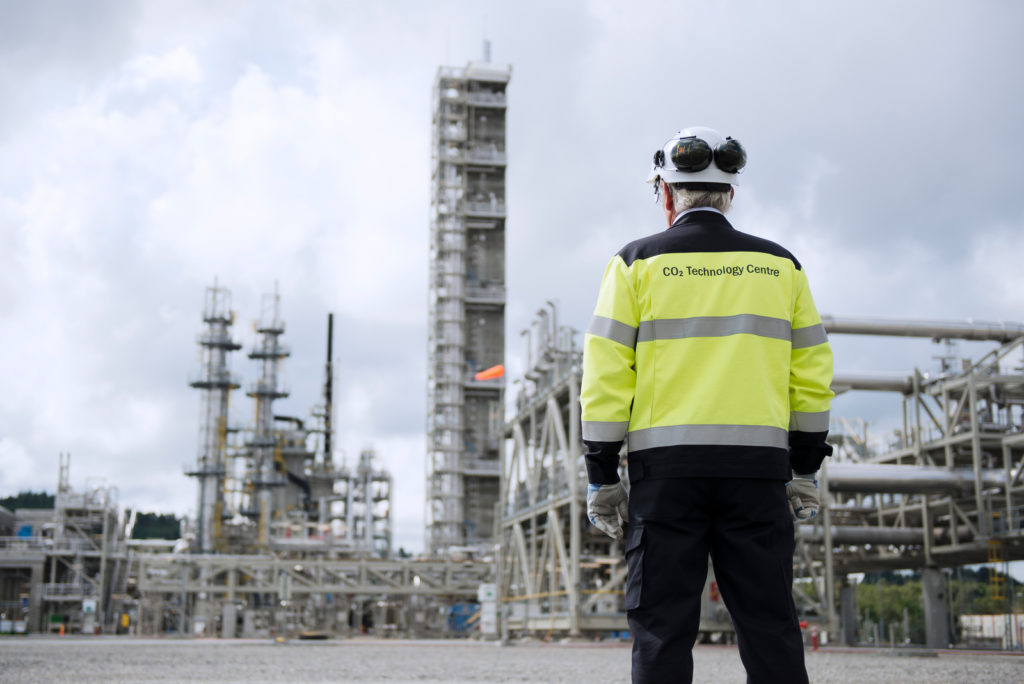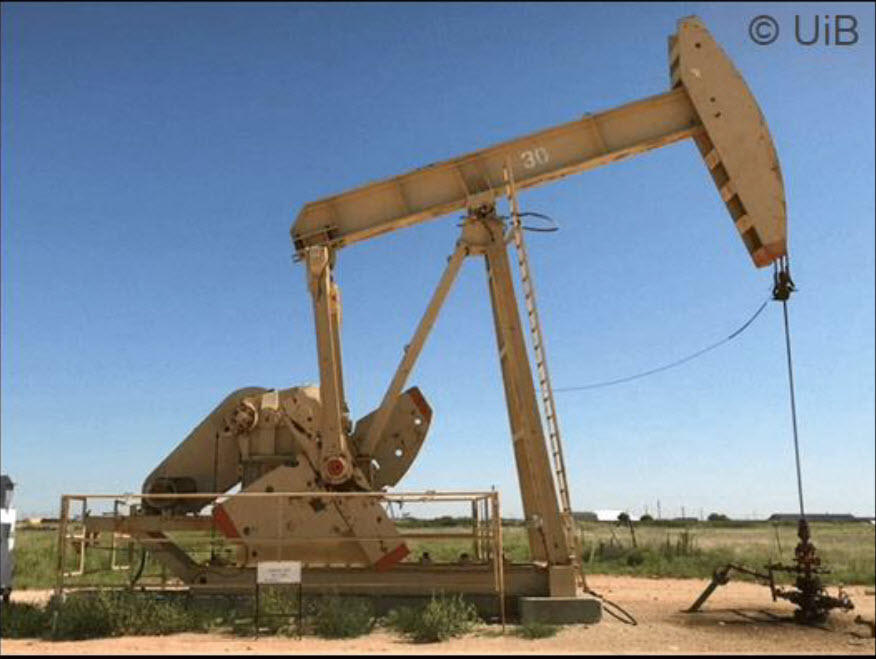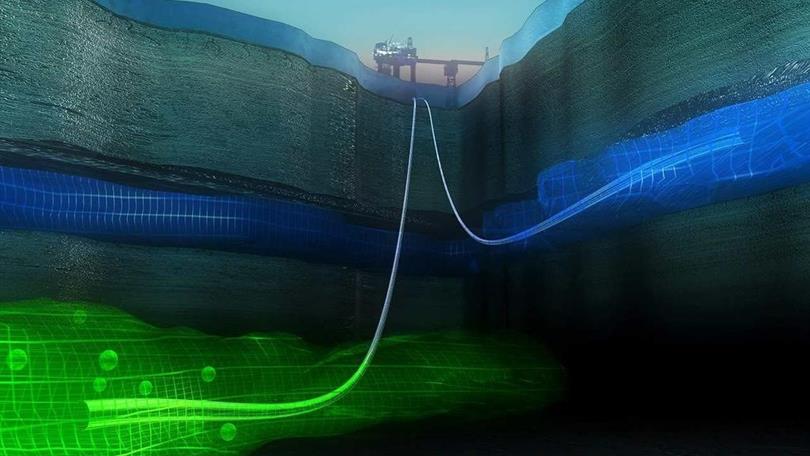Improved environmental knowledge about amine-based CO₂ capture
A CLIMIT supported project on basic research and development of important knowledge about amine reactions in the atmosphere, has doubled the knowledge database on atmospheric amine chemistry.
 2 Technology Centre." Anlegget består av ulike høye strukturer, rør og utstyr som vanligvis finnes i industrielle anlegg. Himmelen er tilskyet. Foto." class="wp-image-803"/>
2 Technology Centre." Anlegget består av ulike høye strukturer, rør og utstyr som vanligvis finnes i industrielle anlegg. Himmelen er tilskyet. Foto." class="wp-image-803"/>New knowledge about amine based CO2 capture is implemented at TCM
– The project has provided new fundamental scientific data on several technologically important amines and has doubled the existing atmospheric chemistry data base on amines. This new information has already been used in modelling emissions from TCM, says Professor Claus Nielsen at the University of Oslo.
Nielsen has worked with emissions of amines for many years in connection with full-scale CO2 capture and storage in Norway through activities at the University of Oslo and at the Technology Center Mongstad (TCM). He has been leading the CLIMIT research project since its start-up in 2015.
The most mature CO2 capture technology today is based on the use of amines. When CO2 is captured on an industrial scale from e.g. energy production, waste incineration or the cement industry, small amounts of amines will be released to the surroundings. Amines decompose in the air and then small amounts of nitrosamines and nitramines are formed which can be carcinogenic.
The Norwegian Institute for Public Health has recommended how much nitrosamines and nitramines can be emitted to air and drinking water. This has provided the Norwegian environmental authorities a method to set emission limits for CO2 capture facilities.
There are several amines that can be used for CO2 capture, and therefore detailed knowledge of the amines’ atmospheric chemistry is required to be able to set upper limits on how much amine can be allowed in industrial emissions.
Advance the knowledge on amines and their fate in the environment
The objective for this project has been to advance the knowledge on amines and their fate in the environment, and thereby to facilitate sound environmental impact assessments of implementing large-scale amine-based post combustion carbon capture and storage technology (PCCCS).
To meet these objectives, the project has undertaken photo-oxidation studies of selected amines including quantification of the nitrosamines and nitramines formed, and employed quantum chemistry calculations to develop degradation mechanisms for implementation in atmospheric chemistry and dispersion models.
There is now sufficient data available for sterically hindered amines (AMP), cyclic
amines (piperazine, piperidine, morpholine, imidazole) and open-chain polyamines
(ethylenediamine, trimethylenediamine) to allow a reliable prediction of the nitrosamine and nitramine formation in the atmospheric degradation of these compound classes. This new information has already been implemented in atmospheric chemistry and dispersion models of emissions from TCM.
The project has funded a two-year research position. In addition, PhD students and employees at the university have been associated with the project. So far, two articles have been published in international journals and another five are in progress.
The project consisted of a strong international team and experts from both universities in Oslo, Gothenburg, Innsbruck, Lyon, Leeds and York have participated in the project. A major part of the project included studying the compounds in the photochemical reactor EUPHORE in Valencia by four of the research groups.
CO₂ DataShare launches digital data sharing portal
CO2 DataShare launches an online, digital platform for sharing reference datasets from pioneering CO2 storage projects. This can contribute to even more cost-effective and secure CO2 storage.

Research and development activities in the field of CO2 storage are often hampered by the lack of access to data from actual storage projects. Experience in sharing data from Sleipner shows the effect this data sharing has had on increasing knowledge and also international acceptance of CO2 storage.
– Since the start of 2018, the CO2 DataShare project has had ambitions to continue to expand the concept internationally. We believe this will be of great importance for international dissemination of knowledge and acceptance for carbon capture and storage (CCS), says Kari-Lise Rørvik of Gassnova.
CO2 DataShare has received financial support from Gassnova/Climit Demo and the US Department of Energy (DOE), which increases the likelihood that results will be applied internationally.
Read the press release from SINTEF
CO₂ storage can be combined with EOR
An international CLIMIT-supported project led by the University of Bergen has exciting results on CO2 storage combined with increased oil production (EOR).

Exciting results
An international CLIMIT-supported project led by the University of Bergen has exciting results on CO2 storage combined with increased oil production.
New technology developed at the University of Bergen utilizes anthropogenic CO2 for enhanced oil recovery (EOR) while storing CO2.
With the use of CO2 foam the oil production increase. At the same time more CO2 is stored than what can be achieved by conventional CO2 injection. Furthermore, operating costs is reduced.
Professor Arne Graue is leading an international research collaboration between 5 universities and 6 oil companies in the US and Europe that have both tested the technology in laboratories and also conducted large-scale injections at onshore field pilots in Texas, USA.
The project has just been completed and the final report with interesting results is available from the attached final report.
New models for cost effective CO₂ storage
The Norwegian research institute NORCE has developed new models for CO2 storage that can lead to more cost-effective CO2 storage.

Which formations can be used
When planning large-scale CO2 storage, decisions must be regarding which formations can be used and how to monitor the injection and operation of safe CO2 storage. Geological measurements are important, but not sufficient, and should be supplemented with realistic data models based on geological data.
Uncertainty in the geological properties is a challenge, and uncertainty quantification is necessary to minimize unnecessary costs due to poorly founded decisions. The bottleneck has long been a reliable tool for quantifying uncertainty due to limited data.
NORCE has addressed this in a recently completed project funded by CLIMIT. Through a new mathematical framework for simulating CO2 flow after injection into a reservoir, uncertainties can now be handled more efficiently.
Read more about the project’s results in their final report
